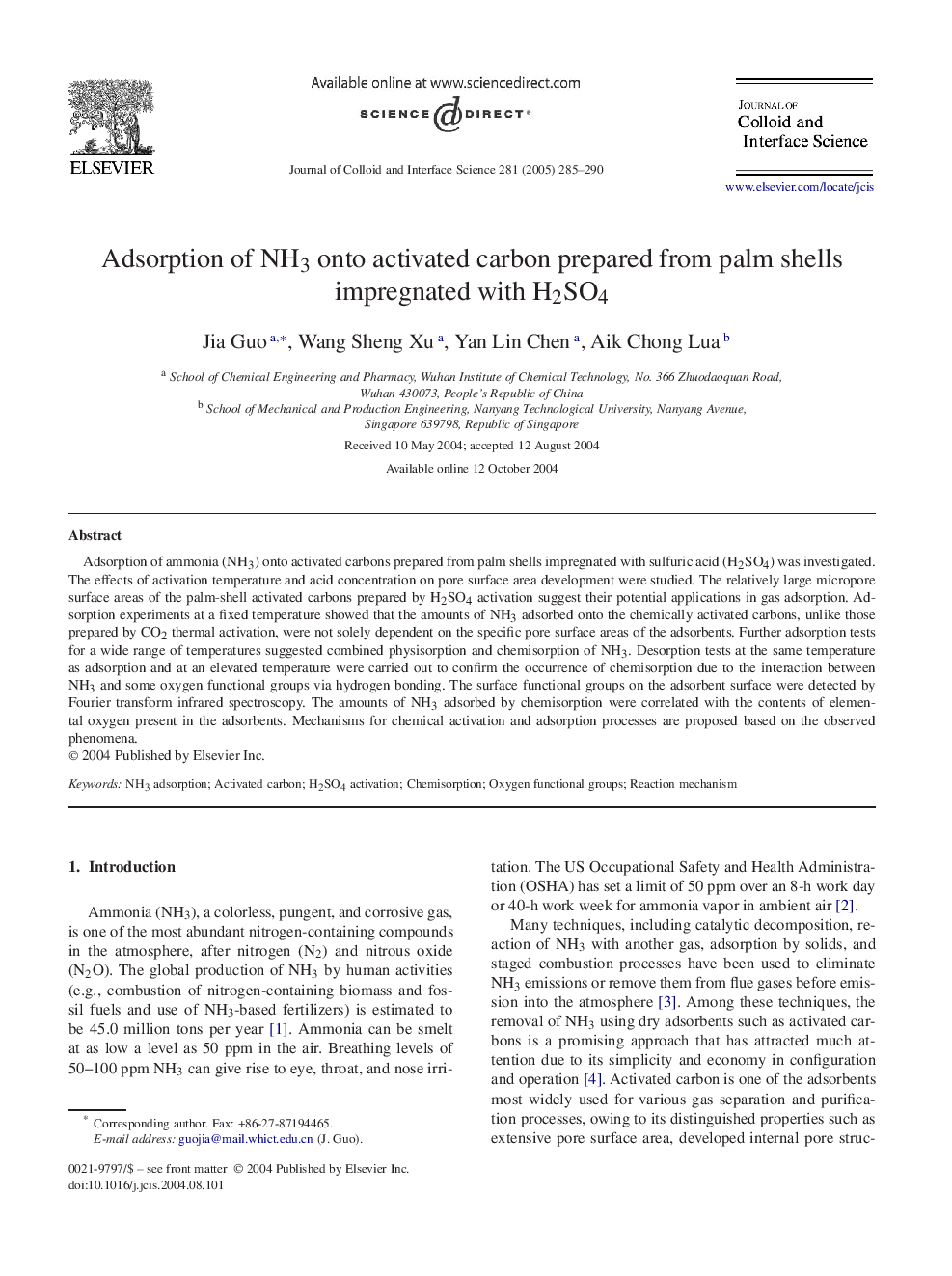| Article ID | Journal | Published Year | Pages | File Type |
|---|---|---|---|---|
| 10378327 | Journal of Colloid and Interface Science | 2005 | 6 Pages |
Abstract
Adsorption of ammonia (NH3) onto activated carbons prepared from palm shells impregnated with sulfuric acid (H2SO4) was investigated. The effects of activation temperature and acid concentration on pore surface area development were studied. The relatively large micropore surface areas of the palm-shell activated carbons prepared by H2SO4 activation suggest their potential applications in gas adsorption. Adsorption experiments at a fixed temperature showed that the amounts of NH3 adsorbed onto the chemically activated carbons, unlike those prepared by CO2 thermal activation, were not solely dependent on the specific pore surface areas of the adsorbents. Further adsorption tests for a wide range of temperatures suggested combined physisorption and chemisorption of NH3. Desorption tests at the same temperature as adsorption and at an elevated temperature were carried out to confirm the occurrence of chemisorption due to the interaction between NH3 and some oxygen functional groups via hydrogen bonding. The surface functional groups on the adsorbent surface were detected by Fourier transform infrared spectroscopy. The amounts of NH3 adsorbed by chemisorption were correlated with the contents of elemental oxygen present in the adsorbents. Mechanisms for chemical activation and adsorption processes are proposed based on the observed phenomena.
Related Topics
Physical Sciences and Engineering
Chemical Engineering
Colloid and Surface Chemistry
Authors
Jia Guo, Wang Sheng Xu, Yan Lin Chen, Aik Chong Lua,
